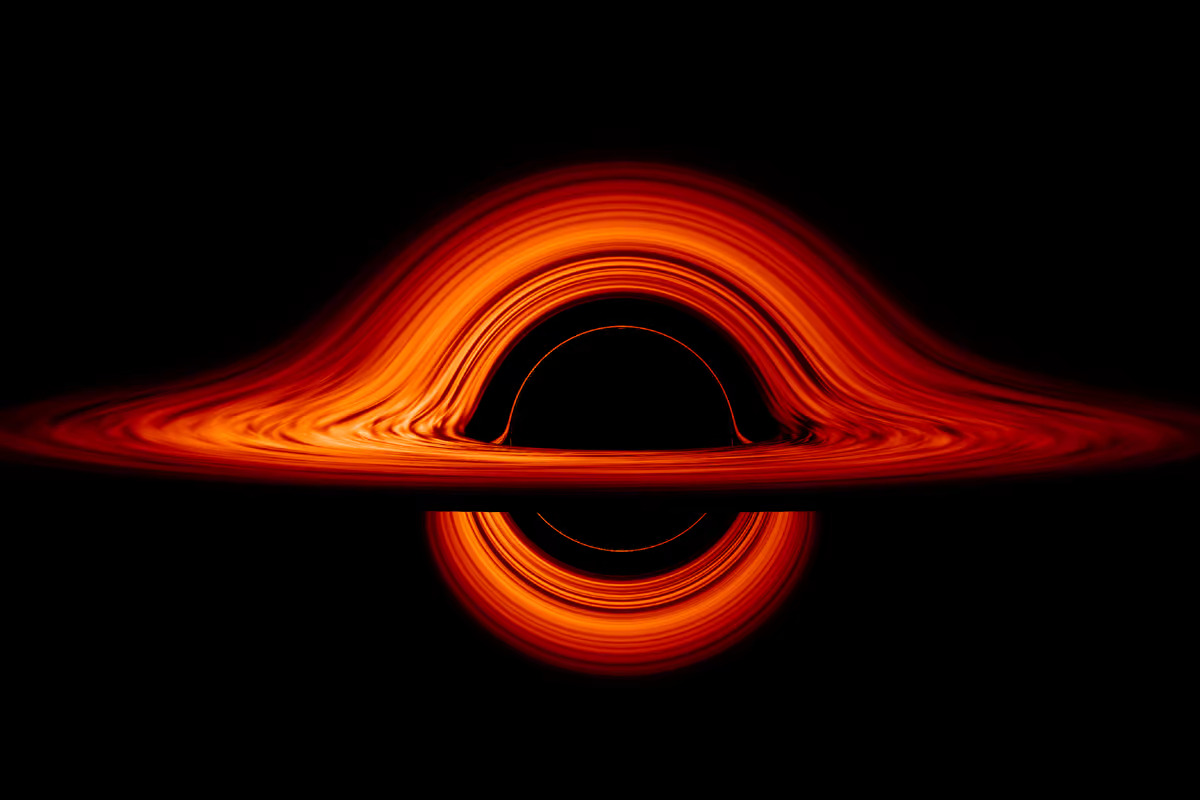 An artist’s impression of a black hole and its accretion discNASA’s Goddard Space Flight Center/Jeremy Schnittman. View 1 Images
An artist’s impression of a black hole and its accretion discNASA’s Goddard Space Flight Center/Jeremy Schnittman. View 1 Images
–
Astronomers have known since the late 1920s that the universe is expanding, and for decades it was assumed that the rate of this expansion would be slowing down over time. After all, gravity pulls things closer together, and the gravitational pull of all the matter in the universe was thought to be dragging on everything.
But in the 1990s, astronomers using the Hubble Space Telescope made an unexpected discovery – the exact opposite was occurring. The farther an object was from our vantage point, the faster it seemed to be moving away from us, indicating the expansion of the universe was accelerating over time. With no explanation in models at the time, a force dubbed “dark energy” was formulated, which pushes everything away from everything else at an increasing rate.
Astronomers have been looking for signs of this dark energy ever since, based on the properties that it seems to have. And in a new study, an international team of scientists claims to have found evidence for where dark energy might be hiding – inside black holes.
Contrary to what we might think, a vacuum isn’t totally empty – random quantum fluctuations produce what’s known as vacuum energy, which exerts an outward pressure that could work against gravity and drive the expansion of the universe. In some models, vacuum energy could be found in black holes, and in the new study the team found the first observational evidence of this.
The astronomers started by studying the evolution of supermassive black holes at the centers of galaxies over the last nine billion years. These black holes gain mass mostly by swallowing up dust, gas, stars and other black holes, but in some galaxies, known as giant elliptical galaxies, this feedstock dries up. It should be expected then that the supermassive black holes in elliptical galaxies stop growing.
The researchers compared the masses of these black holes in distant elliptical galaxies (which are seen as they were billions of years ago) to those closer to us in space and time. And sure enough, the supermassive black holes in modern elliptical galaxies are between seven and 20 times more massive than they were nine billion years ago.
That indicates that supermassive black holes can gain mass through some other mechanism as well. And if they contain vacuum energy, they would both contribute to the expansion of the universe and gain mass from the process as well, in a phenomenon called cosmological coupling.
The team says this is the first observational evidence that black holes contain vacuum energy, and when they crunched the numbers they found that this could account for the amount of dark energy measured in the universe today.
While there’s been no shortage of other proposed sources of dark energy, the team says that this new model may be the neatest. That’s because it doesn’t require anything new to be added to our existing models – the gap can be plugged by black holes as predicted by Einstein’s general theory of relativity.
As an added bonus, the new model also explains another cosmological puzzle. In current models black holes are theorized to compress everything that falls into them into an infinitely dense singularity, a point where the laws of physics break down. They should be mathematically impossible, so physicists either find workarounds for them or take them to mean that our models are incomplete. But if black holes contain vacuum energy, singularities no longer need to exist, which could be a major breakthrough in our understanding and further evidence for the new model.
As intriguing as the study is, further research and observations will be needed to confirm the model.
The research was published in two papers in The Astrophysical Journal and the Astrophysical Journal Letters. The team describes the work in the video below.
–
Source: UK Research and Innovation
–























